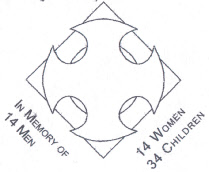

Infectious diseases in the nineteenth century
Cholera was one of many contagious diseases which killed people in the nineteenth century. Great Britain experienced two Cholera epidemics in the 1800s. Cholera bacteria (Vibrio cholerae) is transmitted by water or food which has been contaminated with the faeces of people who have the disease. Symptoms include severe diarrhoea and dehydration, which can lead to shock and death if left untreated.
The Rector of Camerton, Somerset kept a diary. His entry for October 3rd 1830 dealt with an outbreak of cholera in Paulton. Revd Skinner tells how the local doctor, Curtis, did not see the need to take any precautions against the spread of desease but Revd Skinner explains what measures the villagers took to prevent the spread of the disease. “I am happy to hear the common people, now the danger is come to their doors, begin to take some precaution such as whitewashing their houses and purchasing camphor upwards of a pound having been sold in one day at the shop in Camerton, They also burn juniper which grows in quantities under Faulkland Knoll.”
Many people believed that bad odours carried disease into their houses and their bodies, and complaints to the authorities were made about the sewer smells infiltrating homes.
Revd Skinner is also clear of how the disease came to the parish. “...vagabond match seller from Bath conveyed it to the house where he was taken for a night's lodging and immediately conveyed the infection to the household and to others. He was buried in his clothes the following morning and those who died are buried in a piece of ground without funeral ceremony”
Dr Curtis was critisised for his ineffective treatment as he believed blood letting was the correct action. Most patients died of dyhydration and should have been treated with lightly salted water, letting blood added to the dyhydration. Giving the patient water to drink would also have acelerated the desease if it was unboiled and from the same contaminated source that was causing the problem,
In the country areas the cottages were cramped with large families and poor sanitation.
Most cottages had earth closets which had to be “dug out” once or twice a year the
waste being heaped up attracting flies and disease the stench while the “digging
out” was being done must have been all evasive. Great care would have been needed
to ensure that the water supply was well clear of the dung heaps.Our Bray ancestors
came from Cornwall. There is a good description of Cornish mining cottages on the
Cornish Mining site which includes this quote about Camborne the home of our RULE
ancestors. “In Camborne I was taken to a row of thatched cottages, each consisting
of only two dark and low rooms, and all of which had no privies, and no system of
drainage whatever, the inmates throwing everything either into a small back yard
or common dust heap in the street." A second quote on that site states that in Pain
an Gwarry the 133 houses had only 11 privies between them and that the wells were
“contaminated with sewage from overflowing communal cess-
There are two memorials in the church yard of Holy Trinity Paulton,Somerset. One
commemorates an outbreak of "Asiatic Cholera" in 28 Sep -
Our ancestors who died in Paulton during the 1832 outbreak of Asiatic cholera:
Eve BULL was buried 10 Oct 1832 aged 5 years
Joyce BULL [2664] was buried 26 Oct 1832
aged 15 years
Jacob BULL [2884] was buried 2 Nov 1832 age 5 years
Dinah BULL nee WATTS
[2878] (mother of Jacob) was buried Nov 10 1832 also of Cholera
The entries for these in the parish register are marked with C and Cholera is written in the margin.
Seventeen years later there was another outbreak of the dreadful disease, which is commemorated by a memorial stone on the edge of Holy Trinity Church yard in Paulton which reads “In Memory of 14 men 14 women and 34 children”

who died of Asiatic Cholera with
which awful desease this Parish
was visited for a
Second time
between th 9th of October 1849
and the 4th of January 1850.
———————————
Who knoweth not in all these that
the hand of the Lord hath wrought
this. In whose hand is the soul of every living thing and the breath of all mankind. Job XII . 9 . 10
Rural Oxfordshire did not avoid the outbreak Thomas and Sarah FENNIMORE [10342 & 10348] togeher with their seventh child Joseph [10349] were all buried between August 9th and 12th 1832 in Wendlebury..
Although these cholera instances were bad it should be remembered that in 1832 more people died of tuberculosis than cholera. The disease first appeared in the port of Sunderland and spread out to the whole country. By May and June there were riots in Liverpool, when people attacked the doctors and hospitals and clashed with the police. It was the fear of cholera and public hysteria that lead to great improvements in public health provisions.
Smallpox was declining during the nineteenth century as more people were vaccinated. Edward Jenner had developed vaccination against small pox in 1796
Isaac GRUNDY [5181] was the son of William and Martha and was baptised in Childrey
20 July 1806.The parish records also records that he was born on June 20th 1806 and
vaccinated on February 4th 1807. At the bottom of the page was this note:-
“In the Year 1802 many People in this Parish were carried off by the Small Pox: & all the Inhabitants, down to Mary Turner (May 6 1802) were inoculated. The Small Pox being now in the Neighbourhood; it is propos'd to vaccinate those who have been born since. And Prejudices against this Institution existing amongst the Ignorant I deem it expedient to mark here a star by the Letters I & V those who adopt these several Prevention.
James Beaver Rector. Feby 4 1807”
Between 1850 and 1860 there was a world pandemic of Diphtheria. But it wasn’t until 1883 that the bacillus that causes the disease was isolated. The work on the disease in the late nineteenth century was thought to be the turning point in medicine when successful immunization and good paediatric medicine lead to the elimination of diphtheria from the U.K.
Typhus is carried by body lice which were common in areas in which people live in overcrowded, dirty conditions, with few opportunities to wash themselves or their clothing.
Epidemic typhus causes fever, headache, weakness, and muscle aches. It also causes a rash composed of both spots and bumps. The rash starts on the back, chest, and abdomen, then spreads to the arms and legs. The worst types of complications involve swelling in the heart muscle or brain. Without treatment, this type of typhus can be fatal.
Three children of James and Charlotte GILES nee PARSLEY who lived in Thrupp died
of typhus and were buried within 5 days of each other.
Pheobe Ann GILES [12014] buried
24 October 1868 in Kidlington
Julia Mary GILES [12015] buried 26 October 1868 in
Kidlington
William GILES [12013] buried 29 October 1868 Kidlington
Our ancestors who died in Paulton of Asiatic cholera 1849-
Zachariah BULL [2829] was buried 30 Oct 1849 age 31 years
Ann CARTER nee JAMES [3426]
was buried 31 Oct 1849 aged 27 years
Sarah Ann CARTER [3433] was buried 4 Nov 1849
age 5 years
John CARTER [3294] was buried 8 Nov 1849age 18 years
Jacob AMOS [1476]
was buried 15 November 1849 aged 18 years
Mary AMOS [1477] was buried 27 Nov 1849
aged 12 years
George CARTER [3130] was buried 30 Nov 1849 aged 4 years
Jane CARTER
[3346] was buried 30 Nov 1849 aged 9 years
John BULL [3787] was buried 2 Dec 1849
aged 20years
Elija CARTER [3121] was buried 6 Dec 1849 aged 44 years
Elizabeth Ann
CARTER [3434] was buried 9 Dec 1849 aged 4 years
Joyce BULL [2870] was buried 11 Dec
1849 aged 14 years sister of Joyce who died in the 1832 outbreak.
David CARTER [3198]
was buried 22 Dec 1849 aged 28 years.
There were others of family names yet to be
identified
William AMOS buried 21 November 1849 aged 3½ years
Ann AMOS buried November
24 aged 4 years
Site layout and content © 2007-